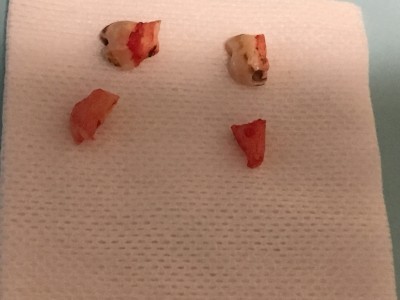Neuropsychiatric features of mast cell disease: Part 1 of 2
The fact that psychiatric symptoms occur as a function of mast cell disease on the nervous system is common knowledge to patients but less acknowledged by providers. A significant population of mast cells is found in the brain in close association with both blood vessels and nerve cells. Mast cells are present in large numbers in the hypothalamus, which regulates stress response, emotion and cognition; the amygdales, near the pituitary gland; and the thalamus. Lesions and structural changes in the thalamus have previously been associated with altered perception of pain and emotional reactivity.
One study found that in a group of 88 patients with indolent systemic mastocytosis (ISM) and cutaneous mastocytosis (CM), 75% reported depressive symptoms. In another study, a group of 288 mastocytosis patients had a prevalence of 60% depressive and anxiety-type symptoms. The depressive symptoms seen most often in mastocytosis patients are affective and cognitive symptoms (depressed mood, low motivation, feelings of guilt and failure; and anxio-somatic symptoms (physical and mental effects of anxiety, insomnia). Psychomotor difficulties (slowing of thought processes and/or neurologic control of movement) and lack of insight were rare in these patients.
Depression is often assessed using the Hamilton Depression Rating Scale. This tool may not be ideal for use in mast cell patients because the somatic symptoms correlated with depression are often the same as physical symptoms of mast cell disease. When excluding symptoms that could be from mastocytosis rather than depression, patients still had a high prevalence of sadness and loss of motivation.
One mastocytosis cohort reported 38.6% had cognitive impairment of some kind. Inability to focus and pay attention is the cognitive symptom most commonly reported by mastocytosis patients. This was not linked to depression, age, education or staging of mastocytosis. Importantly, it was also independent of amount of antihistamine use. Memory impairment was also not related to age or education. Cognitive difficulties were found to be much more prevalent in mastocytosis patients than in other chronic disease populations.
Fatigue is a common neuropsychiatric symptom for mast cell patients and has been seen in populations with both mastocytosis and mast cell activation syndrome. Patients who have moderate to severe fatigue often experience pain and cognitive deficits. The level of fatigue can be disabling as it makes it difficult to focus or perform even simple tasks.
35% of mastocytosis patients in one study reported 35% had either acute or chronic headaches. 37.5% had migraines, while 17.2% had tension type headaches. Headache patients often reported episodic flushing or itching at the time of the headache. In the migraine group, 66% experienced aura symptoms. Overall, 39% of patients in this group with or without migraines experienced aura symptoms, usually visual.
Exaggeration of the stress response could explain neuropsychiatric symptoms in mast cell patients. In one population, 42% of patients perceived their stress level to be high. Persistent stress response could lead to negative emotions. These symptoms could be reinforced by mast cell hyperactivity in the brain, which can affect stress response, emotionality and cognition.
References:
Georgin-Lavialle S, et al. Mastocytosis in adulthood and neuropsychiatric disorders. Translational Resarch 2016; x:1-9.
Georgin-Lavialle S, et al. Leukocyte telomere length in mastocytosis: correlations with depression and perceived stress. Brain Behav Immun 2014; 35: 51-57.
Moura DS, et al. Neuropsychological features of adult mastocytosis. Immunol Allergy Clin North Am 2014; 34(2): 407-422.
Moura DS, et al. Depression in patients with mastocytosis: prevalence, features and effects of masitinib therapy. PLoS One 2011, 6: e.26375.
Moura DS, et al. Evidence for cognitive impairment in mastocytosis: prevalence, features and correlations to depression. PLoS One 2012, 7: e.39468.
Smith JH, et al. Neurologic symptoms and diagnosis in adults with mast cell disease. Clin Neurol Neurosurg 2011, 113: 570-574.
